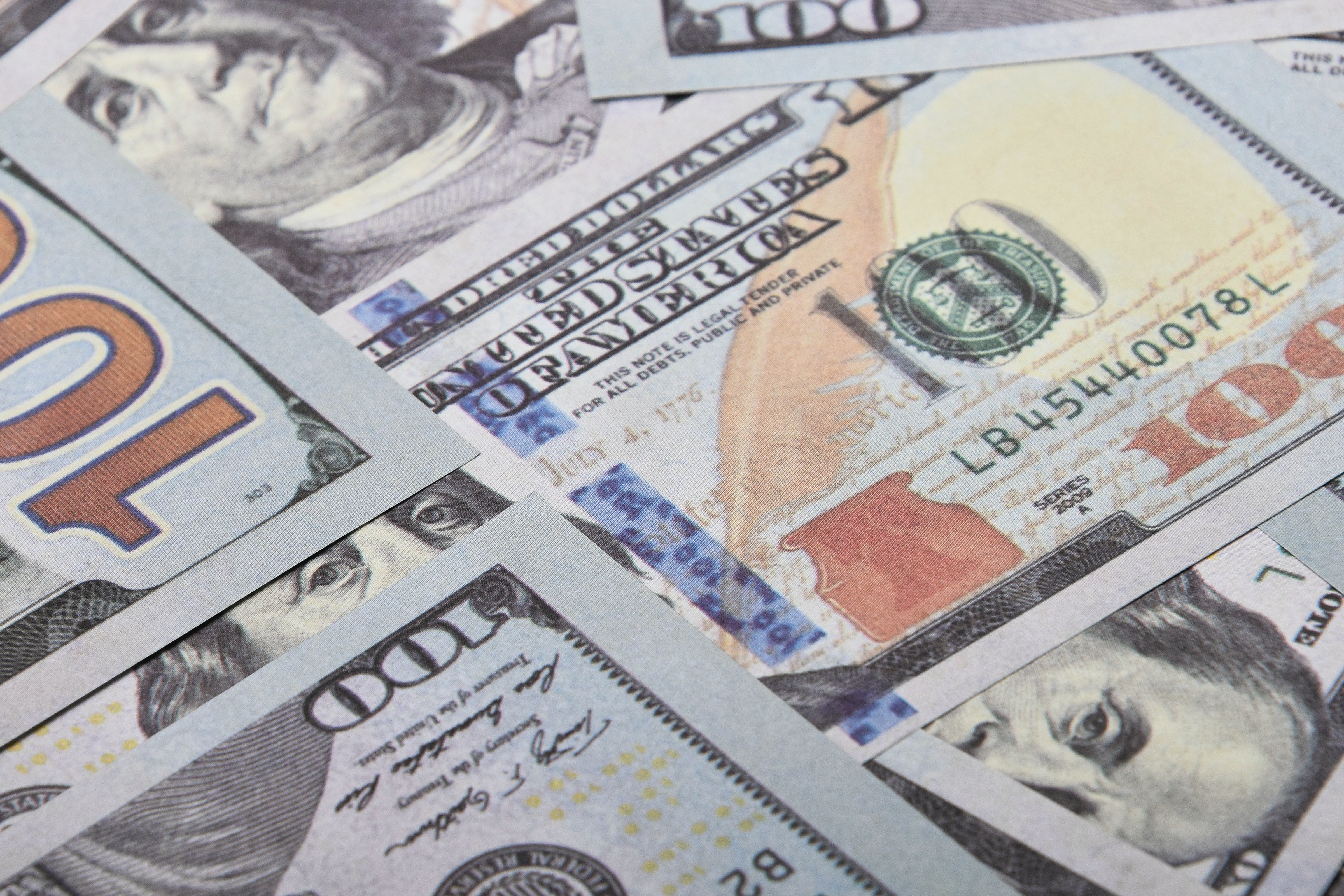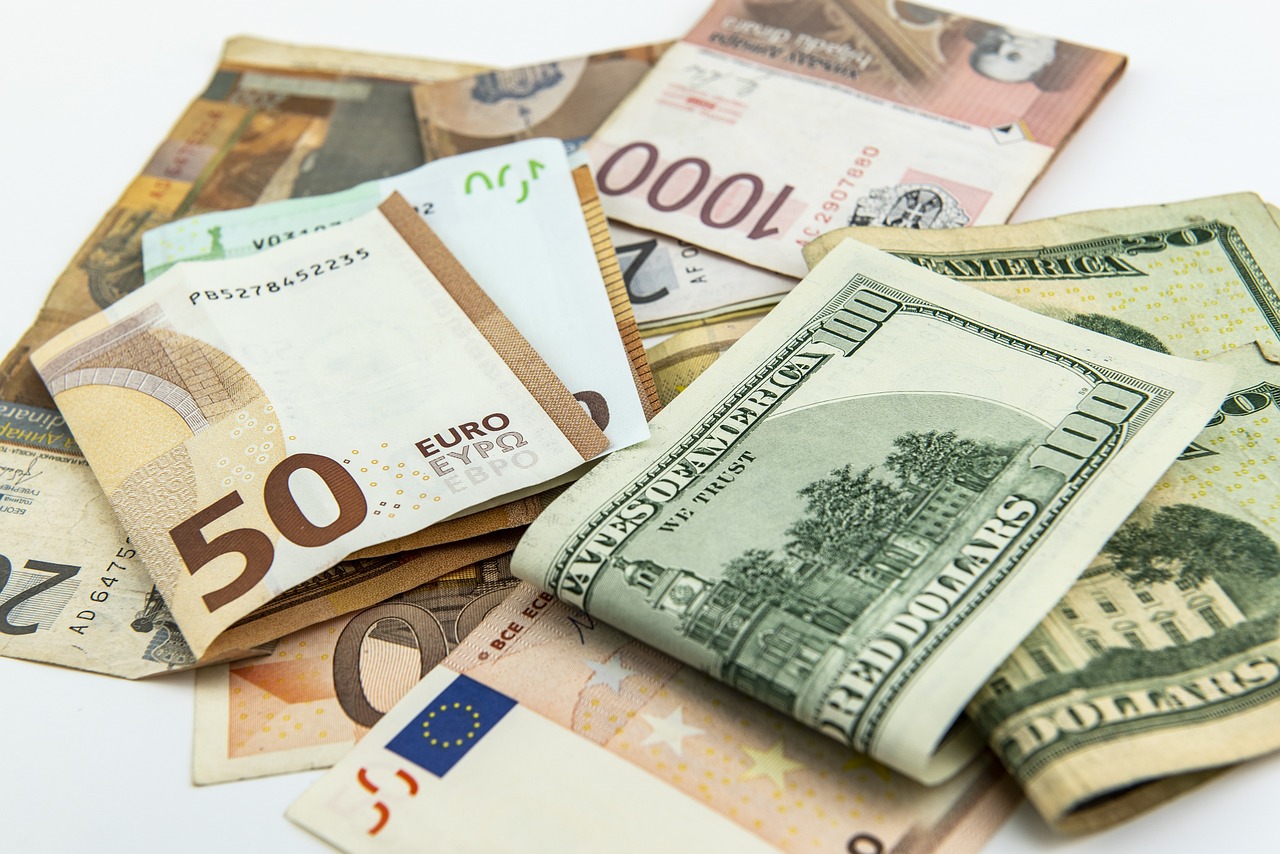Exploring the Role of Bangko Sentral ng Pilipinas and the Impact of Digital Payments on the Philippine Peso – A Comprehensive Guide
GPT_Global - 2024-05-09 12:30:12.0 707
What role does the Bangko Sentral ng Pilipinas play in overseeing the Philippine peso?
The Bangko Sentral ng Pilipinas, also known as the Central Bank of the Philippines, plays a crucial role in overseeing and regulating the Philippine peso. As the country's central monetary authority, the BSP is responsible for maintaining the stability of the peso and promoting a sound financial system for the benefit of the Filipino people. One of the key functions of the BSP is to implement monetary policies that ensure price stability and support economic growth. Through its control of interest rates and money supply, the BSP aims to keep inflation and exchange rates at manageable levels. This allows businesses and individuals to make informed decisions without the threat of sudden currency fluctuations. In addition, the BSP is also in charge of issuing and managing the country's currency and foreign reserves. This includes printing banknotes and minting coins, as well as managing the country's foreign exchange reserves to protect against market volatility. This ensures a steady and reliable supply of pesos for both local and international transactions. Moreover, the BSP also has a supervisory role in the banking and financial sector. It issues regulations and guidelines to ensure the stability and integrity of the financial system, protecting consumers and investors from fraudulent activities. This oversight also extends to the remittance business, which is an important source of foreign exchange for the Philippines. For remittance businesses, the role of the BSP is crucial in ensuring the safe and efficient transfer of funds across borders. The central bank implements regulations to prevent money laundering and other illegal activities, while also promoting competition and innovation in the industry. In conclusion, the Bangko Sentral ng Pilipinas plays a vital role in the Philippine economy, particularly in overseeing the Philippine peso. Its efforts help maintain a stable currency, support economic growth, and safeguard the interests of consumers and investors. For remittance businesses, adherence to BSP regulations is essential in providing reliable and secure services to their customers.
How has the advent of electronic and digital payments affected the use of physical Philippine pesos?
The advent of electronic and digital payments has greatly affected the use of physical Philippine pesos. With the rise of technology and the increasing popularity of online transactions, people are now turning to digital platforms to make payments and transfers, rather than using physical cash. This has had a significant impact on the remittance business in the Philippines, as more and more people are choosing to send money through electronic means.
One of the major benefits of electronic and digital payments is convenience. With just a few clicks, people can now send money to their loved ones anywhere in the country without having to leave their homes or visit a remittance center. This ease of access has made digital payments a preferred choice for many, especially in times of emergencies or when physical distance is a hindrance.
The use of electronic and digital payments has also greatly improved the speed of money transfers. In the past, sending money through physical means could take days or even weeks to reach its destination. Now, with electronic and digital payments, the transfer is almost instantaneous, making it a much more efficient way to send and receive money.
Moreover, the safety and security of electronic and digital payments have made them a popular choice among users. With advanced security measures such as two-factor authentication and encryption, there is a lower risk of fraud or theft compared to carrying physical cash.
As a result, the use of physical Philippine pesos for remittance purposes has declined over the years. People are now more comfortable and trusting of electronic and digital payments, which has led to a decrease in the demand for physical cash. This trend is expected to continue as technology continues to advance and the use of digital payments becomes even more widespread.
In conclusion, the advent of electronic and digital payments has greatly impacted the use of physical Philippine pesos for remittance purposes. Its convenience, speed, and security have made it a preferred choice among users, leading to a decline in the demand for physical cash. As the world becomes more digital and reliant on technology, it is likely that the use of physical pesos for remittance will continue to decrease in the future.
What impact do remittances from overseas Filipino workers have on the circulation of Philippine pesos?
The Impact of Remittances from Overseas Filipino Workers on the Circulation of Philippine Pesos
The remittance business is a vital part of the Philippine economy, and it plays a significant role in the circulation of Philippine pesos. Overseas Filipino workers (OFWs) are considered as modern-day heroes for their contribution to the country's growth through remittances. These remittances not only benefit the families of the OFWs but also have a significant impact on the overall economy.
Remittances from OFWs provide a steady flow of foreign currency into the country, which helps to strengthen the Philippine peso. This, in turn, reduces the country's reliance on foreign loans and boosts the economy's foreign exchange reserves. With a stronger currency, the purchasing power of the peso increases, resulting in lower inflation rates and more stable prices for goods and services.
Aside from strengthening the currency, remittances also have a positive impact on the financial sector of the Philippines. Banks and other financial institutions benefit from the influx of remittance funds, as these funds are deposited into local accounts and are used for investments and lending. This leads to increased liquidity in the financial market and promotes economic growth.
Moreover, remittances also support the domestic consumption in the country. The families of OFWs who receive the remittances often use it to cover daily expenses and make purchases, thereby driving the demand for goods and services. This, in turn, creates more jobs and stimulates economic activity, ultimately contributing to the country's overall economic growth.
In conclusion, the remittance business has a significant impact on the circulation of Philippine pesos, benefiting both the economy and the people. OFWs play a crucial role in the country's economic development, and their contributions through remittances should be recognized and appreciated. As the Philippines continues to rely on remittances for economic stability, it is important to support and promote this industry to ensure its continued growth and success.
Are there any coins or bills that are no longer in circulation in the Philippines?
Coins and Bills No Longer in Circulation in the Philippines
If you are a Filipino living abroad, chances are you often send money back home to your loved ones. With the rise of technology, remittance services have become more accessible and convenient. However, have you ever wondered what happened to the old coins and bills that were once used in the Philippines? Well, here's a brief rundown of some of the coins and bills that are no longer in circulation.
1. Pilipino Series Coins (1967-1992)
The Pilipino Series coins were introduced in 1967 and were used until 1992. These coins featured the portrait of then-President Ferdinand Marcos and were minted in various denominations such as 1, 5, 10, 25 and 50 centavos, and 1 piso. These coins were made of nickel and aluminum and were replaced by the New Generation Currency series.
2. Ang Bagong Lipunan Series Bills (1973-1985)
Dubbed as the "New Society" series, these bills were released during the time of the martial law regime in the Philippines. The bills featured the portrait of then-President Ferdinand Marcos and were printed in the denominations of 1, 5, 10, 20, 50, 100, and 200 pesos. These bills were eventually replaced by the Flora and Fauna series.
3. Flora and Fauna Series Bills (1983-1993)
These bills were introduced in 1983 and were used until 1993. The designs featured various endemic plants and animals in the Philippines, hence the name Flora and Fauna series. The bills came in the denominations of 5, 10, 20, 50, 100, and 500 pesos. In the late 1990s, these bills were gradually phased out and replaced by the New Design Series.
4. New Design Series Bills (1985-2016)
The New Design Series bills were introduced in 1985 and were used for over three decades until 2016. The designs featured various Filipino national heroes and landmarks. These bills came in the denominations of 5, 10, 20, 50, 100, 200, 500, and 1000 pesos. In 2017, these bills were completely replaced by the New Generation Currency series.
So, the next time you send money to the Philippines, you won't see these old coins and bills being used anymore. Instead, you'll find the new and more secured New Generation Currency series in circulation. But don't worry, your loved ones will still receive the same value of money you sent to them through remittance services like ours. We ensure fast, reliable, and secure money transfers to the Philippines.
With our easy-to-use online platform, you can easily send money anytime and anywhere. Plus, you can choose from various payment options and enjoy competitive exchange rates. So what are you waiting for? Start sending money to your loved ones in the Philippines now and stay connected with them no matter how far you are.
Experience hassle-free remittances with us today!
How do you convert Philippine pesos to other currencies for international transactions?
Converting Philippine pesos to other currencies is a crucial aspect of international transactions, especially for remittance businesses. As a remittance business, it is essential to provide efficient and cost-effective conversion services for your clients. Here are some ways to convert Philippine pesos to other currencies for international transactions.
Firstly, you can use online currency exchange platforms such as TransferWise or XE Money Transfer. These platforms offer real-time currency conversions at competitive rates. Additionally, they have low fees, making them an attractive option for international transactions.
Secondly, you can use banks or financial institutions that offer currency exchange services. However, these may have higher fees compared to online platforms. It is advisable to compare the rates and fees of different banks before choosing one for your remittance business.
Another option is to visit physical currency exchange shops. These can be found in major cities, and they offer on-the-spot currency exchanges. However, they may have limited currency options, and their rates may not always be the most favourable.
Lastly, some remittance businesses partner with money transfer operators such as Western Union or MoneyGram. These operators have a wide network of branches and agents worldwide, making it convenient for your clients to send and receive money in different currencies.
In conclusion, as a remittance business, offering efficient and affordable currency exchange services is crucial for your success. By utilizing online currency exchange platforms, banks, physical exchange shops, or money transfer operators, you can cater to your clients' needs for converting Philippine pesos to other currencies for international transactions.
What is the smallest and largest denomination of Philippine peso coins?
The Philippine peso is the official currency of the Philippines, and it is divided into two main denominations – coins and banknotes. While the banknotes come in various denominations ranging from 20 pesos to 1,000 pesos, the coins have a much smaller value. In this article, we will take a closer look at the smallest and largest denomination of Philippine peso coins, which play an important role in the country's remittance business.
The smallest denomination of Philippine peso coin is the 10-centavo coin. This coin features a small copper-plated steel disc with the profile of national hero Jose Rizal on one side. On the other side, you can find the number 10 and the inscription "Republika ng Pilipinas." While this may seem like a tiny amount, it still holds value as many low-income earners rely on these coins to make their daily purchases.
On the other end of the spectrum, we have the largest denomination of Philippine peso coin – the 10-peso coin. This coin is made of nickel-plated steel and has a diameter of 27 mm. It features the same design as the 10-centavo coin but with the number 10 replaced with the number 10 and three stars above it. This coin holds more value and is commonly used for larger purchases such as transportation fares or small grocery trips.
In the remittance business, Philippine peso coins play a significant role, especially for those sending money to their families in rural areas. As banknotes are not accepted in most small stores and markets outside of major cities, sending coins allows for easier and more practical transactions. Moreover, some remittance services even offer the option to send coins directly to the recipient's home, making it easier for them to access and use the money.
In conclusion, while the smallest denomination of Philippine peso coins may seem insignificant, they hold an essential role in the country's economy and remittance business. For those sending money to the Philippines, it is crucial to consider the value of these coins and how they can be used by your loved ones to meet their daily needs.
How do you determine the authenticity of a Philippine peso bill?
As a remittance business, it is important to ensure the authenticity of Philippine peso bills before accepting them as payment. This not only protects your business from accepting counterfeit money, but also ensures that your customers are receiving valid currency for their transactions. Here are some ways to determine the authenticity of a Philippine peso bill.
1. Check the paper quality – The Philippine peso bills are made from high-quality cotton paper, which has a distinctive feel and texture. Counterfeit bills may be printed on low-quality paper or even regular printer paper, which can easily be detected by touch.
2. Look for security features – Philippine peso bills have several security features such as watermarks, security threads, and holograms. These features are difficult to replicate and can easily be seen when held up to the light.
3. Examine the print quality – Genuine Philippine peso bills have crisp and clear print, while counterfeit bills may have blurry or uneven letters and numbers. You can also check for hidden images or patterns in the design, which are difficult to reproduce.
4. Check the serial numbers – Each Philippine peso bill has a unique serial number, and counterfeit bills will often have duplicate or mismatched serial numbers. You can verify the validity of the serial numbers with the Bangko Sentral ng Pilipinas (BSP) website.
5. Seek professional help – If you are still unsure about the authenticity of a Philippine peso bill, you can seek the assistance of the BSP or bank tellers who are trained to identify fake currency. They have advanced tools and techniques to verify the legitimacy of the bill.
In conclusion, as a remittance business, it is crucial to carefully examine Philippine peso bills to ensure their authenticity. By following these guidelines, you can protect your business and your customers from falling victim to counterfeit money. Remember, always be vigilant and stay informed about the latest security features of Philippine peso bills to avoid being fooled by fake currency.
What factors can influence the value of the Philippine peso in the global market?
The value of the Philippine peso in the global market is a topic of great importance, especially for those involved in the remittance business. As the Philippine peso is the official currency of the Philippines, it plays a crucial role in the country's economy and international trade.
One of the main factors that can influence the value of the Philippine peso is the country's economic performance. A strong and stable economy can attract foreign investors and increase demand for the currency, thus increasing its value.
Another factor is the political stability of the country. Any political turmoil or instability can cause uncertainty in the market, leading to a decrease in the value of the currency. On the other hand, a stable political environment can inspire confidence in investors and contribute to the currency's strength.
The balance of trade is also a significant factor in determining the value of the Philippine peso. If there is a trade surplus, meaning the country exports more than it imports, it can lead to an increase in the value of the currency. Conversely, a trade deficit can weaken the currency's value.
Inflation and interest rates are also crucial indicators of a currency's value. High inflation rates can decrease the purchasing power of the currency, making it less attractive to investors. On the other hand, high-interest rates can make the currency more appealing to investors seeking to earn a higher return on their investments.
Lastly, the overall global economic climate can also impact the value of the Philippine peso. Factors such as changes in the US dollar exchange rate, global market trends, and international events can all affect the currency's value.
In conclusion, various economic and political factors can influence the value of the Philippine peso in the global market. Understanding these factors is crucial for those involved in the remittance business to make informed decisions and navigate the ever-changing landscape of international trade.
About Panda Remit
Panda Remit is committed to providing global users with more convenient, safe, reliable, and affordable online cross-border remittance services。
International remittance services from more than 30 countries/regions around the world are now available: including Japan, Hong Kong, Europe, the United States, Australia, and other markets, and are recognized and trusted by millions of users around the world.
Visit Panda Remit Official Website or Download PandaRemit App, to learn more about remittance info.



